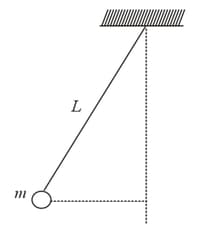EASY
JEE Main/Advance
IMPORTANT
Earn 100
Which of the following quantities may remain constant during the motion of an object along a curved path.
(a)speed
(b)velocity
(c)acceleration
(d)magnitude of acceleration
50% studentsanswered this correctly

Important Questions on Circular Motion
MEDIUM
JEE Main/Advance
IMPORTANT
EASY
JEE Main/Advance
IMPORTANT
EASY
JEE Main/Advance
IMPORTANT
MEDIUM
JEE Main/Advance
IMPORTANT
MEDIUM
JEE Main/Advance
IMPORTANT
EASY
JEE Main/Advance
IMPORTANT
EASY
JEE Main/Advance
IMPORTANT
MEDIUM
JEE Main/Advance
IMPORTANT
A ball of mass is attached to the end of a string having length . The ball is rotated on a horizontal circular path about a vertical axis. The maximum tension that the string can bear is . The maximum possible value of the angular velocity of ball (in ) is :

